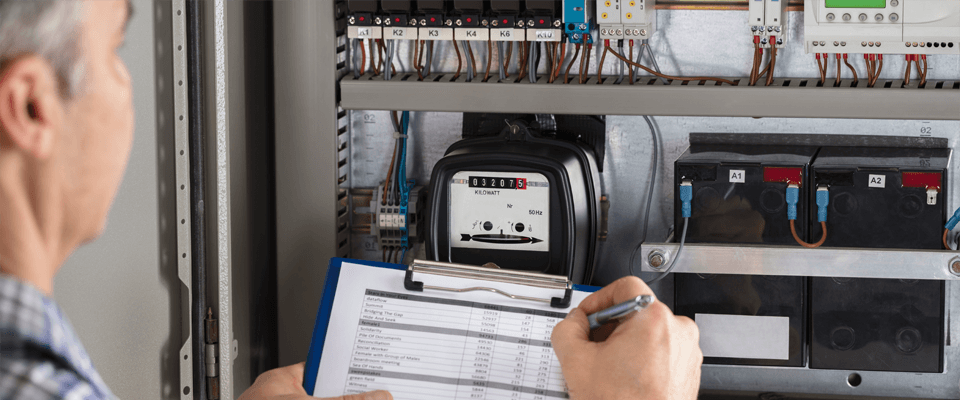
I’m moving house: how should I manage my gas and electricity contract?
What should you do if you’re moving to a new house soon but you haven’t yet taken out a new energy contract? Don’t worry: if you follow a few simple steps, the energy supply to your new home will up and running on the desired date.
One thing is certain: moving house is not the most relaxing experience. Whether you’re becoming an owner or a tenant, there are lots of details you have to sort out: boxes, direct debits, the loan or lease, etc.
Need a reminder? Download our special, free, house moving checklist so that you don’t forget anything! >> See the checklist
Discover all the energy suppliers promotions!
Compare electricity and gas prices and switch supplier for free in just a few clicks on Energyprice.be.
The good news is that, out of this long list of tedious tasks, there’s one important thing you can cross off already: choosing a supplier and an energy contract. Are you sceptical? It must be said that energy contracts are still widely seen as obscure paperwork. However, choosing a suitable gas and/or electricity contract for your new home is actually far less complicated than trying to fit all your boxes into the boot of your car! The secret lies in the supplier price comparison sites, especially those that offer free, personalized support, such as Energyprice.be.
This guide will show you how to manage your energy contract when you move house, while ensuring that the process remains stress-free.
1. D-30 before the move, prepare the groundwork!
As the saying goes, there is no point in rushing; you must start off on the right foot. That’s why we strongly advise you to deal with the issue of your energy supply well in advance. Ideally, you should tackle the matter one month before your moving date. In this way, you will be able to devote yourself entirely to your packing and all the other administrative tasks without worrying about not having any power or heating in your new home. This is what you need to do.
Review your contract using an energy comparison site
When you move, there’s no need to take your old contracts with you. On the contrary, it’s actually in your interest to take advantage of this opportunity to review your price conditions. There are several reasons for this:
- Your current contract may not be suitable for your new living environment (different type of accommodation or meter, whether there is access to gas, etc.);
- If you have changed Region, your current supplier may not serve your new address;
- You may be able to take advantage of cheaper promotional offers, particularly if market prices are falling, and you have not checked your rates for several years.
On the plus side, today, it has never been so easy to review your gas or electricity contract. You simply need to visit an energy price comparison site, armed with your current rate (which you can find on your latest bill or in your customer space on your supplier’s website).
However, if you simply want to check where your contract sits in relation to the current offers from other suppliers, we recommend that you use CREG Scan, the tool developed by the national regulator. This will tell you at a glance whether it would be in your interest to switch contract.
Case no. 1: keep the same gas or electricity contract (transfer it to your new address)
Does CREG Scan indicate that your contract prices are around the average or even cheaper? That’s great news! You should then check whether the terms of this contract can be applied to your new home and whether your supplier does actually operate in the locality you are moving to. If so, there’s no need for you to change contract at the moment. You can simply ask your supplier to transfer your current contract to your new address. To do this, please go to your supplier’s website. In your customer space, you should be able to submit a contract transfer request. If not, please contact the customer service department to find out what steps you should take.
Case no. 2: change your energy contract
If CREG Scan indicates that your contract is too expensive compared with the market average, there’s not a moment to lose: you need to change your price plan or even your supplier! To do this, the regulator’s tool will refer you to a certified energy comparison site. This means that you will be able to find objective, transparent, high quality information.
It is the case, for instance, of Energyprice.be, which is the first online comparison site that received the official certification label. In addition, the platform takes into account the supplier promotions so that it can offer you the most complete and reliable comparison possible.
Which energy supplier suits you best? Find it out with a simulation!
Once you have done your comparison and found the energy contract that is best for your new home, you just need to switch contract. To do this, simply enter your contact details online (name, address, EAN codes for the new accommodation, etc.). Then, in just three clicks, you will have confirmed your request to change contract, without even needing to leave the website!
This action will automatically cancel your previous contract. This means you do not need to submit a specific cancellation request to your previous supplier. The energy advisers at Energyprice.be will look after these administrative procedures on your behalf.
Confirmation and additional details
Whether you’re keeping the same contract or changing to a new one, your request will be followed up with a confirmation. At this stage, if you have not yet informed your new supplier of the date on which you wish your contract to begin, it is time to do so.
Tip: choose the date on which you will receive the keys to your home as the contract start date. This will ensure that the contract will actually start on the day you become master of the house.
Some suppliers may also ask you for additional information, such as proof of meter readings. There are several types of documentary evidence:
- A lease agreement for a rental;
- A notarial deed for a purchase;
- The energy transfer document (see below);
- An updated household composition (issued by the municipality).
Finally, as a precaution, you can consider informing your network administrator of your imminent change of address. This will ensure that your file is in order for all concerned.
Special cases
We have reviewed the standard case: a household with an existing energy contract moves into a similar new home. But, as with everything, there are special cases. Let’s take a look at them.
You don’t have an existing energy contract
If you’re leaving home for the first time, or arriving in Belgium, or your owner looks after the energy supply on your behalf, you won’t have a pre-existing energy contract. If so, using CREG Scan first is meaningless. You can therefore choose an energy contract right away on Energyprice.be, specifying the supply address and the moving date.
Compare now all energy suppliers active in Belgium and save money on your bill !
Empty title
It may be that, in your current accommodation, you have taken out an energy contract in your own name. However, when you move house, it will be the owner of your new rental property that will be responsible for taking out the contract.
This is the only situation in which you will need to formally cancel your contract. You must therefore send a registered letter to your supplier to inform them that you are cancelling your gas and/or electricity contract.
Please note that contracts usually have a notice period (often one month). This means that, at the end of your contract, your supply will continue during this period. So you can see the importance of dealing with the issue of your energy contracts one month in advance.
You are moving into a new build
In this instance, even before worrying about your energy contract, you must check that the house is properly connected to the electricity grid and to the natural gas network. While the former should be a mere formality, the latter depends very much on your new location. There are still a number of geographical areas in Belgium in which the gas network is not very extensive. As a result, requesting a gas connection can prove expensive in terms of work, and sometimes even impossible.
Once your connection to the electricity grid is confirmed, and you are linked to the gas network if this option is feasible, you just need to follow the steps mentioned above.
Empty title
In this very specific case, you are still required to have an energy contract, even if the building remains unoccupied. This is referred to as an “empty home energy contract”.
Empty title
If you have chosen your contract a month before your move, you should have peace of mind until D-Day. Once the long-awaited date has arrived, here are the things you will need to tackle.
Read the meter and complete the energy transfer document
When you move out of your home, you are strongly advised to complete the energy transfer document with the next occupant of the premises. This is a document which clearly states the gas or electricity meter reading at the time you officially hand over the keys of the house or flat. To do this, make sure you sign two copies: one for you and one for the new occupant.
This important step confirms the quantity of gas and electricity you have actually consumed before you move out of your home. So, in the event of a billing problem or a dispute, this document will protect you as it confirms the meter reading on the date the keys were handed over.
Note : If you have solar panels, you should instead complete the version of the document specifically for green energy production installations. >> Download the special form
Pay your final bill
The meter reading is essential for completing the energy transfer document and is particularly useful for preparing your final bill. This is the last bill you will receive for your old supply point. You will need to send your reading to your supplier within seven days of reading the meter.
Whether you’re changing supplier or not, this final bill is still necessary so that you can settle your situation in relation to the accommodation you are leaving. If you have correctly provided your new contact details to the supplier concerned, you will receive this bill at your new address.
The tenant situation
If you are a tenant, there are several possible scenarios when you move house.
1. Your owner has let you manage your energy contracts yourself: in this case, there is no difference compared to the “normal” case. You can simply make arrangements with your lessor or with the next tenant to complete the energy transfer document.
2. Your owner has required you to use an energy contract which they themselves have taken out: This situation gives rise to two other sub-scenarios. Either your owner has required you to pay a fixed monthly sum, or you have had to make provisional payments based on your actual consumption. In the first case, your situation is in order, and you don’t have to do anything. In the second case, you will have to sort out the adjustment with your lessor.
Special case: turning off a meter
Normally, you do not need to turn off your meter when you move house. However, this special procedure may be safer if the next occupant or your owner refuse to sign the energy transfer form. To protect yourself from any possible dispute, you can ask your network administrator to turn off your meter. This will cut off the energy supply for this accommodation, and the next occupant will have to ask for the meter to be turned on again. Turning off the meter is free of charge, but there will be a cost involved in turning it on again.
Empty title
That’s it, you’ve finally arrived at your new home! If you have taken out your contract in advance, as we recommend, your electricity supply and possibly your gas supply should be up and running as soon as you receive your new keys. If so, you need to ensure that you have completed a few small tasks to put your mind completely at ease.
Empty title
The roles are reversed, but the procedure stays the same. To ensure that your new energy contract starts with a “blank” meter, it’s a good idea to fill in an energy transfer document at this point as well. Make sure that it has been signed by both parties in duplicate. Then remember to send the meter reading to your new supplier within seven days.
If you move into a house that has photovoltaic panels, make sure you fill in the relevant document.
Finally, it goes without saying that this step is not necessary if you are moving into a new build.
What should you do if you don’t yet have a contract?
What if you have been too busy in recent weeks and have not yet had time to look for an energy contract (and a gas contract, if appropriate)? Never mind. You can still sort it out after you have moved in.
However, don’t leave it too late as, once the previous occupant of the accommodation ends their contract (usually on the day on which the keys are handed over), you only have 30 days to find an alternative supplier! After this time, you run the risk of having your power and heating cut off. It is called the “MOZA process”.
Pay your initial instalment bill
Once your contract has begun, you will soon receive your initial instalment bill (around two weeks later). As a reminder, this is a provision for your future consumption. The new supplier will have prepared it based on your past consumption data which your network administrator will have given them. If you do not have a consumption history, your supplier may use the consumption of the previous occupant of the premises to calculate the instalment.
You simply have to pay it to ensure everything is in order! If you think the instalment is too high, remember that you can change the amount in your customer space on the supplier’s website. But please note that this could increase your adjustment bill if your estimate was too low compared with your actual consumption.
Special case: turning on or changing a meter
In some particular circumstances, you may have to adapt your meter situation when you arrive at your new home. You may, for example, have to:
- have a meter commissioned for the first time (in the event of a new build),
- have a meter turned on again which had previously been turned off,
- change the meter, as the current one is a single-rate meter when you would rather have a dual-rate,
- deactivate a budget meter if you don’t want one (in which case, you must also obtain a deactivation card).
In all these situations, you will need to contact your network administrator to sort out the arrangements. They will inform you of the costs involved in this type of operation and the steps to be followed.
Points to remember
Now that we have reviewed each step, here is a quick summary of the important points to remember:
Before moving:
- 0. [Optional]: check that your new home is properly connected to the electricity grid and, if appropriate, to the natural gas distribution network
- 1. If you already have an energy contract, compare it with the options on the market using CREG scan, and decide whether you want to transfer it to your new address or take out a new contract. If you don’t yet have an energy contract, move to point 2.
- 2. Find out the best offers on the market on Energyprice.be, and take out a new electricity and/or gas contract that suits your situation. If you are not changing contract, contact your supplier to request a contract transfer.
- 3. Receive confirmation from your supplier. If necessary, provide them with any additional data, and notify your change of address to any relevant organizations.
When you move out:
- 4. Read your meter.
- 5. Complete the energy transfer document with the next occupant of the property by reading your meter before you leave. If you are tenants, contact your owner to settle the bills, if necessary.
- 6. Send your meter reading to your supplier so that they can prepare the final bill.
- 7. [Optional]: If you have any difficulty in reading the meter or completing the document, you can ask for the meter to be turned off.
When you move into your new home:
- 8. Read the meter in your new home.
- 9. Complete the energy transfer document with the occupant who is moving out.
- 10. Send the reading to your new supplier.
- 11. Continuation of point 5: permanently terminate your previous contract by paying the final bill which you will receive at your new address. If you do not receive it within 30 days, check that your previous supplier has noted your change of address.
- 12. Receive and pay your initial instalment, around two weeks after the start of your new contract.
- 13. [Optional]: If necessary, arrange for a meter to be commissioned or changed if it does not suit you. In the case of a budget meter, request a deactivation code.
Do you still have questions about your move? Are you in a specific situation that is not covered in this guide? If so, please contact one of our energy advisers free of charge on 0800 37 456. We will be happy to guide you through the process and help you find the right price plan for your new life.
Contact one of our advisers
Also read on our blog

Have you subscribed to a variable rate electricity or gas deal? Since January 2018, you can expect changes in rates every month an…

Are you moving house soon? One of your concerns is probably the electricity and/or gas supply to your new home. But just to make s…

In recent months, Energyprice.be has noticed that the price of energy for night rate only meters has risen. Find out the reasons f…

The energy sector can sometimes be a very complex field. Whether it be legal procedures in order to connect your house to the elec…


